


We believe that there are many victims and families who would like to know about the treatment of the offender in prison and when he/she will be released from prison or was actually released. Therefore, we have created a system where we could notify the victims of how offenders are treated during their terms and when they will be or were actually released from prison.
 |
Please explain about the system for receiving information about offenders’ treatment during their prison terms and their release from prison. | |
 |
There are two different systems. Firstly, under the Victim Notification Scheme (refer to “Victim Notification System”), victims can receive notifications without specifying any particular purpose to receive the information. However the information is limited to such matters as the potential date the offender’s prison term is scheduled to end and the treatment he/she receives and, once the offender is actually released, the date of the release. Under the second system, notifications are for those victims who are in need to prevent further harm by the offender. The information such as the scheduled release day will be notified before the release. |
|
 |
What kinds of information are notified under the first system? | |
 |
In the first system, notifications will include the following information:
|
|
 |
Who can receive notification about the release? | |
 |
In the first system, the following persons can receive notifications:
|
|
 |
Under the first system, will I definitely receive information about the release if I request it? | |
 |
Depending on the circumstances of the offense and other factors, when, for example, the notification may interfere with the offender’s rehabilitation, the public prosecutor may decide notification is not suitable. In such cases, the information may not be provided even if requested. |
|
 |
What do I need to do to receive information under the first system? | |
 |
Persons who wish to receive information need to fill out a request form that clarifies their addresses and the notification method they prefer. The person can submit the request form anytime after the final criminal court judgment has been rendered on the case. The form is to be submitted to the Public Prosecutors Office that handled the case. Those who had requested to receive information about the final judgment will receive the form with the notification of the final judgment. For details, please ask Victim Support Officers or staffs of the Public Prosecutors Offices. 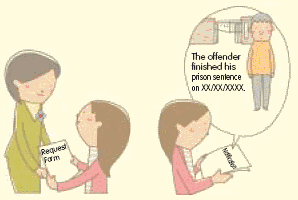 |
|
 |
Under what circumstances could victims receive the information under the notification system for the prevention of re-victimization? | |
 |
The victim, who fears re-victimization by the offender, may request notification so that he/she could plan to move their house or take other measures to avoid contact with the offender. The victim’s request will be granted if the public prosecutor deems it appropriate to give such notification by reviewing such factors as the motive of the offense, whether or not the offense has an organized crime background, the relationship between the victim, his/her families and the offender, and the offender’s behavior. 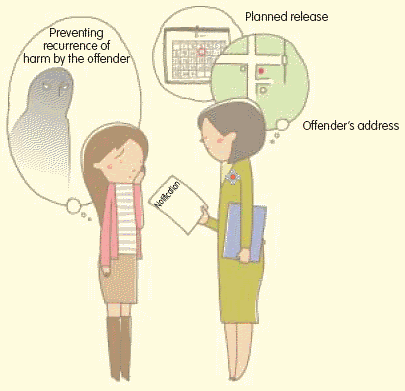
|
|
 |
What kinds of information will be notified? | |
 |
The planned schedule of the release of the prisoner (including release on parole) will be notified immediately before the actual release (Information is usually given at “the beginning,” “the middle,” or “the end” of the particular month). Additionally, if it is especially necessary, the offender’s address after release may be notified as well. |
|
 |
What do I need to do to receive notifications? | |
 |
Please contact the public prosecutor or public prosecutor’s assistant officer in charge or Victim Support Officers if you want to receive such notifications. |
|

The Public Prosecutors Office will promptly return items of evidence that was collected from victims once the investigations and trials are completed.
Items belonging to victims but was seized from offenders, in such cases as theft or robbery will also be returned promptly, as soon as investigations and trials are finished.
Please contact Victim Support Officer, the public prosecutor or public prosecutor’s assistant officer in charge if you wish to have your possessions being used as evidence returned.
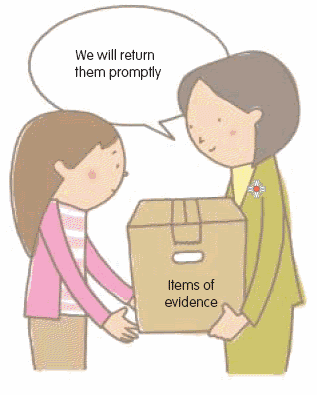

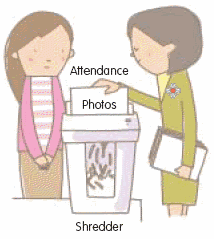
If the victim wishes to be present when the evidence such as photographs that may violate the privacy of the victim are destroyed, please contact Victim Support Officer, the public prosecutor or public prosecutor’s assistant officer in charge. We will see to it that you will be informed of the date, time and place of the destruction of the evidence so that you may observe.

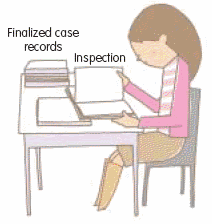
Case records and written decisions of the court are kept at the Public Prosecutors Offices once they are finalized. They can be inspected under the Finalized Criminal Suit Document Law, but for those documents other than the written decision, inspection is generally limited to three years after the final decision.
Please contact the Victim Support Officer or the staff in the record section of the Public Prosecutors Office for more details on the inspection procedure.

This is a system to enable victims or bereaved families to state their opinions about the offender being paroled or the sentiment of the case, in front of the Regional Parole Boards during the parole hearing of the offenders.
Victim’s opinions will be taken into consideration when deciding whether or not to grant parole, as well as when specifying the special conditions for the offender to follow during the period of parole. This system is available only during the period when parole hearings are underway. Victims and their bereaved families will be notified when the parole hearing has commenced by applying to the above mentioned Victim Notification Scheme.


This is a system to convey the victims’ and their bereaved families’ feelings about the case, their current situations, behaviors of the offender under probation to the offender themselves.
The probation office aims to guide and supervise the offender to face the situation of the victim and have the offender deepen their regrets or remorse. This system is available only during the period when the offender is placed under probationary supervision. Victims and their bereaved families will be notified of the commencement of probationary supervision by applying to the above-mentioned Victim Notification Scheme.
The aforementioned system are accessible by (i) victims, (ii) victims’ statutory agents, and (iii) in case the victim is deceased or is suffering serious disability either mentally or physically, the victim’s spouse, direct families or siblings.
At probation offices, professional staff conduct consultation for victims and their bereaved families, provide them with information on victim support systems or procedures, and introduce relevant agencies. Should you wish to use such service, please contact probation office in your prefecture.